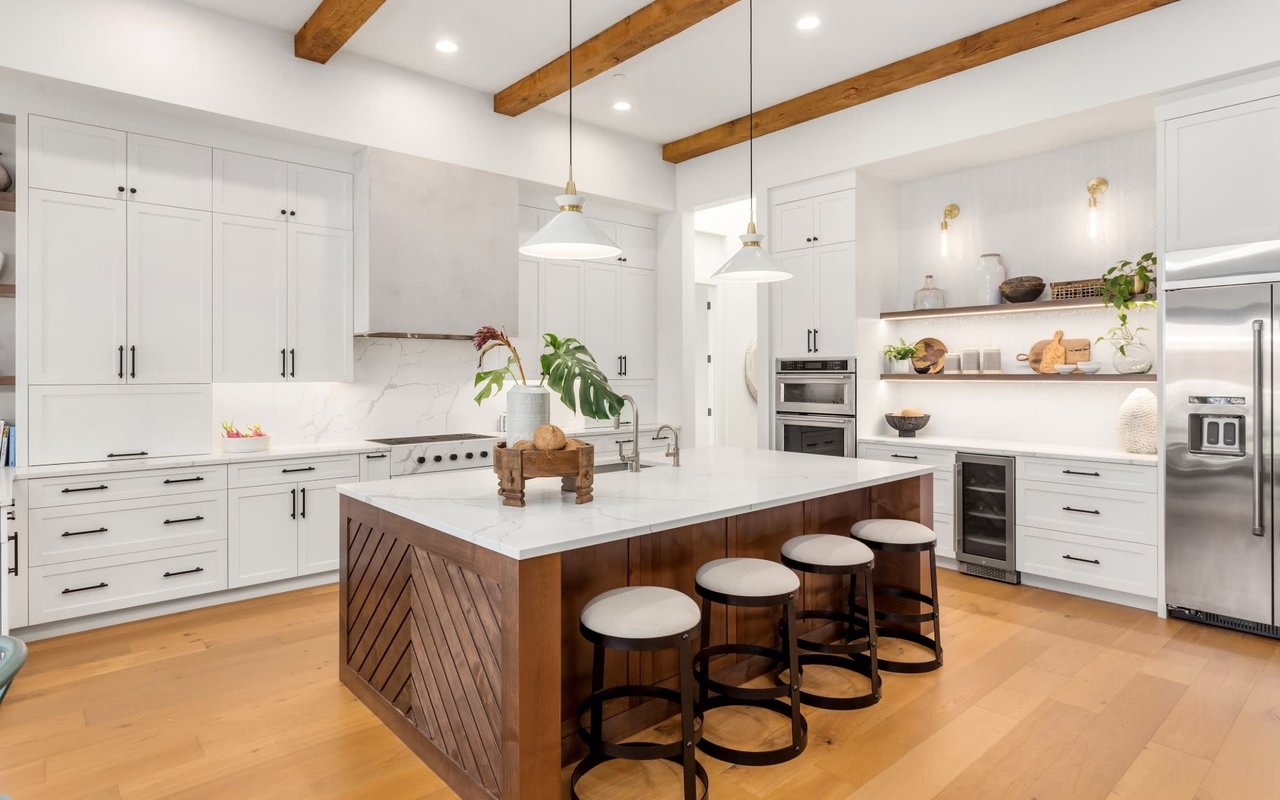Transforming your home's exterior into a stunning landscape can significantly enhance its aesthetic appeal and increase its value. The art of landscaping involves more than just planting a few trees and shrubs; it requires careful planning and creative design to create a harmonious and inviting outdoor space. Whether you're looking to create a peaceful retreat or a vibrant garden, understanding the key elements of landscaping can help you achieve the perfect look for your home.
Understanding Your Space
Before diving into landscaping, it's crucial to understand the unique characteristics of your space. Assess the size, shape, and topography of your yard, as well as the existing features you want to incorporate or change. Consider the climate and soil type, as these factors will influence the types of plants that will thrive in your garden. Understanding these elements will help you create a landscape design that complements your home and suits your lifestyle.
Creating a Focal Point
A well-designed landscape should have a focal point that draws the eye and adds interest to the space. This could be a striking tree, a beautiful sculpture, or a water feature like a fountain or pond. The focal point should be strategically placed to enhance the overall design and create a sense of balance. By choosing a focal point that reflects your personal style, you can create a unique and memorable landscape.
Choosing the Right Plants
Selecting the right plants is essential for a successful landscape design. Consider the color, texture, and size of plants, as well as their growth habits and maintenance requirements. Opt for a mix of evergreen and deciduous plants to provide year-round interest. Native plants are often a great choice, as they are adapted to the local climate and require less maintenance. Group plants with similar water and sunlight needs together to create a cohesive and sustainable garden.
Incorporating Hardscaping Elements
Hardscaping elements, such as patios, walkways, and retaining walls, add structure and functionality to your landscape. These features can define different areas of your garden and provide practical solutions for issues like erosion or uneven terrain. Choose materials that complement the style of your home and blend seamlessly with the natural surroundings. Hardscaping can also include decorative elements like pergolas or arbors, which add height and visual interest to the landscape.
Lighting for Ambiance and Safety
Outdoor lighting is an essential component of any landscape design. It enhances the beauty of your garden by highlighting key features and creating a warm and inviting ambiance. Additionally, lighting improves safety by illuminating pathways and entryways. Consider a mix of lighting options, such as solar lights, LED fixtures, and low-voltage landscape lights, to achieve the desired effect. Properly placed lighting can transform your garden into a magical space after dark.
Designing for Functionality
A beautiful landscape should also be functional, providing spaces for relaxation, entertainment, and play. Consider how you and your family will use the outdoor space and design accordingly. Create seating areas for dining or lounging, and incorporate features like fire pits or outdoor kitchens for entertaining. If you have children or pets, include open spaces for play and ensure that the landscape is safe and accessible for all users.
Maintaining Your Landscape
Regular maintenance is key to keeping your landscape looking its best. Develop a maintenance plan that includes tasks like watering, pruning, fertilizing, and pest control. Consider the seasonal needs of your plants and adjust your care routine accordingly. Investing in quality tools and equipment can make maintenance tasks more manageable and efficient. For those with busy schedules, hiring a professional landscaper can ensure that your garden remains healthy and vibrant year-round.
Sustainable Landscaping Practices
Incorporating sustainable practices into your landscape design can benefit the environment and reduce maintenance costs. Consider using drought-tolerant plants and installing a rainwater harvesting system to conserve water. Implementing composting and mulching techniques can improve soil health and reduce waste. By choosing sustainable materials and practices, you can create an eco-friendly landscape that supports local wildlife and contributes to a healthier ecosystem.
Personalizing Your Space
Your landscape should reflect your personal style and preferences. Add unique touches that make the space your own, such as custom planters, decorative stones, or personalized garden art. Consider incorporating elements that hold sentimental value or represent your interests and hobbies. Personalizing your landscape not only enhances its aesthetic appeal but also creates a space that feels welcoming and meaningful.
Seeking Professional Guidance
For those who are new to landscaping or looking to tackle a large project, seeking professional guidance can be invaluable. A landscape designer or architect can provide expert advice and help you create a comprehensive plan that meets your needs and budget. Professionals can also assist with complex tasks like grading, irrigation installation, and plant selection. Collaborating with an expert ensures that your landscape is both beautiful and functional, and can save time and resources in the long run.
Transform Your Home with Expert Landscaping
Enhancing your home's landscape can significantly boost its beauty and value. By applying these landscaping secrets, you can create a stunning outdoor space that complements your home's aesthetic. Whether you're looking to sell or simply enjoy a more beautiful environment, the right landscaping can make all the difference. For personalized advice and more tips, reach out to Eric Mikus to transform your home into a true masterpiece.



